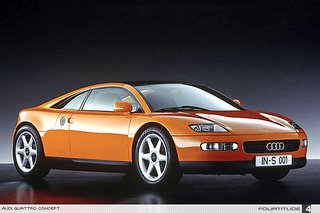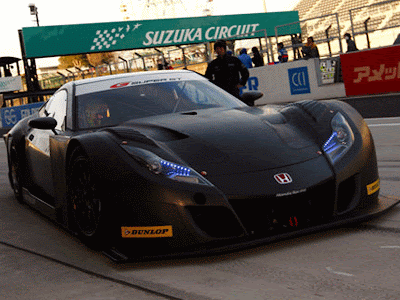It's a must see if you have a chance to come here.



 As from February, visitors to the Audi Forum Ingolstadt can take part in a study programme of a very special kind: between 1 February and 30 April 2006, fascinating vehicle studies will be on show at the Audi museum mobile. The “Study programme” special exhibition features a total of twelve spectacular exhibits. Stunning prototypes from Audi’s history, which were unveiled to expert audiences at a wealth of different exhibitions around the world, can now be “studied” in detail in Ingolstadt.
As from February, visitors to the Audi Forum Ingolstadt can take part in a study programme of a very special kind: between 1 February and 30 April 2006, fascinating vehicle studies will be on show at the Audi museum mobile. The “Study programme” special exhibition features a total of twelve spectacular exhibits. Stunning prototypes from Audi’s history, which were unveiled to expert audiences at a wealth of different exhibitions around the world, can now be “studied” in detail in Ingolstadt.Deliberately simplistic surroundings enable visitors to devote their full attention to the impressive exhibits without any distractions. The NSU Ro 80 Pininfarina quarz is no less than 35 years old: designer Sergio Pininfarina presented this futuristic study, based on the NSU Ro 80, at the 1972 Turin Motor Show. The vehicle is defined by optimised aerodynamics and the use of new safety technology. On show to the public for the first time during this special exhibition in the Audi museum mobile are two unusual prototypes. They are the Audi Motorcycle with a four-cylinder engine from the Audi 50 dating from 1976, a vehicle that has almost fallen into oblivion, and the entirely unknown study of a modern small car project, the Audi “Student”, developed at the end of the 1970s.
A real hit at the Frankfurt Motor Show in autumn 1991 was a flat sports coupé with a V6 mid-engine and a sensational aluminium body, the Audi quattro Spyder. Automotive experts were absolutely amazed when, at the Tokyo Motor Show one month later, Audi presented a futuristic sports car study in highly polished aluminium with a 12-cylinder W-layout mid-engine: the Audi Avus quattro. Following this in 1993 was the aluminium study ASF (Audi Space Frame) with an aluminium body and a V8 turbo diesel direct injection engine that created a stir, and not just under the bonnet.
The brilliant Audi Rosemeyer study, which dates from 2000, pays homage to history. At first glance, this super sports car appears to be out of this world. Flat, crouching, in a hurry. Flowing, aerodynamic lines unite with pure functionality. At second glance, the eye notices something familiar: the massive radiator grille is reminiscent of the Auto Union Silver Arrow! The car was named after the prodigious racing driver Bernd Rosemeyer. The off-road concept study Audi Steppenwolf illustrates how Audi developers visualised a high-performance compact-class vehicle for road and off-road use at the end of 2000. And further reinforcing the hitherto extremely successful Audi maxim that translates as “Beautiful estate cars are called Avant”, the study with the descriptive name “Avantissimo” took its place in the spotlight at the 2001 Frankfurt Motor Show.
Audi caused a sensation at the Detroit Motor Show in January 2003 with a promising interpretation of a crossover vehicle – the eye-catching concept study Pikes Peak quattro. Its hallmarks: dynamism, design and space. The name pays tribute to three Audi victories between 1985 and 1987 with the Audi Sport quattro and the Audi Sport quattro S1 in the legendary hill climb up the 4300-metre-high Pikes Peak in Colorado, USA. The next hit came at the Geneva Motor Show two months later: Audi exhibited the Nuvolari quattro study, the vision of an elegant and high-performance luxury coupé of tomorrow. It is named after Tazio Nuvolari, the racing legend from Mantua, who also secured Grand Prix victories for the Auto Union. Audi designers chanced an extremely long-range view into the future of automobiles in the year 2035 with the Audi RSQ project: a super-futuristic mid-engined sports coupé played the lead vehicular role in the Hollywood production “I, Robot”. An innovation in the RSQ is a spherical wheel system that also enables it to travel sidewards along one plane.
A second part of the exhibition complements the vehicles on display. Here visitors can experience what defines Audi design today. Bringing the subject to life are exhibits including dynamic design drawings, the plastic portrayal of technical processes in design, an aroma bar and an inspiration wall. Attached to the wall is a seemingly random choice of objects from art, culture, nature and everyday life that are capable of firing designers’ creativity in their work. Children don’t miss out either. They’re invited to gain ideas from the wall and to then get to work themselves with paints and craft materials.
© germancarblog.com
Source: Fourtitude











No comments:
Post a Comment